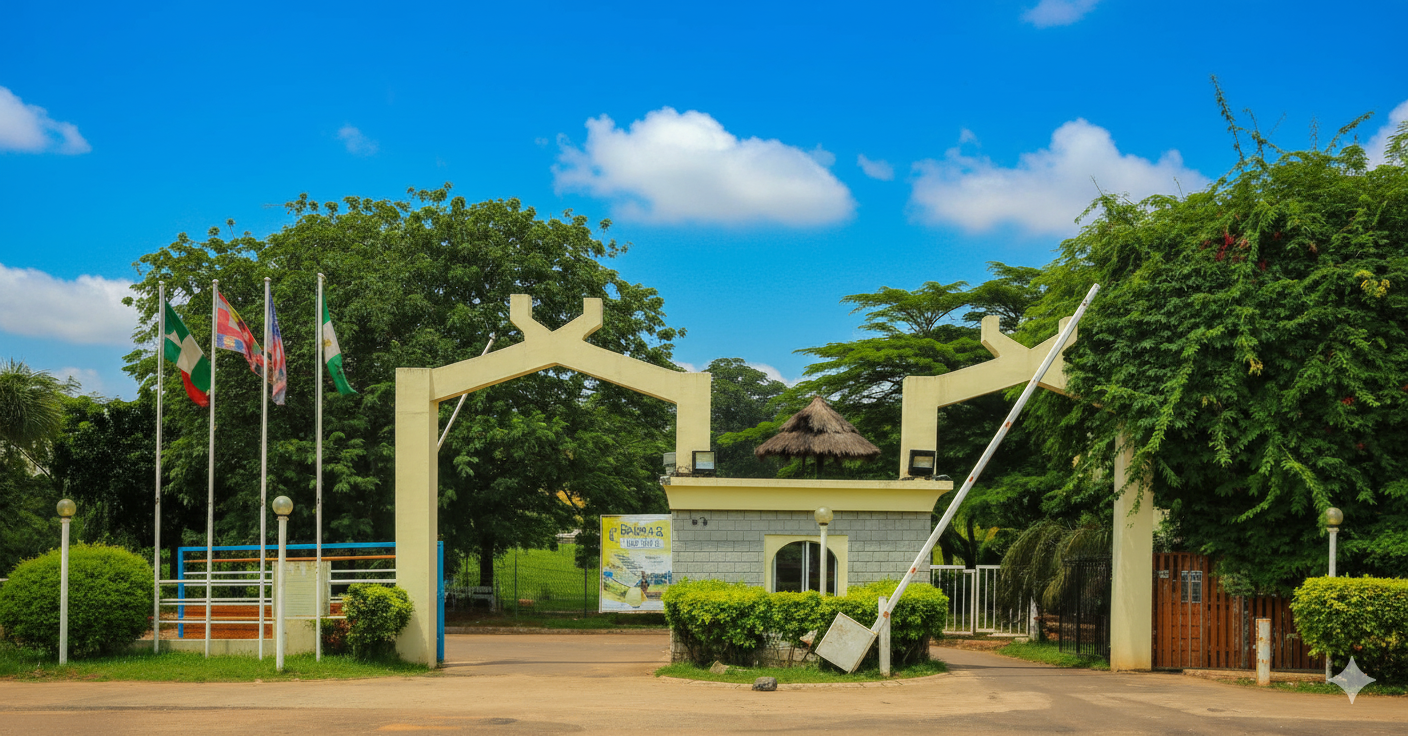Zuma Rock Abuja: Nigeria's Iconic Monolith - Complete Travel Guide 2024

Zuma Rock Abuja: Nigeria's Iconic Monolith - Complete Travel Guide 2024
Zuma Rock Abuja stands as one of Nigeria's most recognizable natural landmarks and a symbol of the nation's geological heritage. This massive monolith, often called "Nigeria's Ayers Rock," rises dramatically from the landscape and features a mysterious human face-like impression that has captivated visitors and locals for generations.
The Legend and History of Zuma Rock
Zuma Rock holds deep cultural significance in Nigerian history and folklore. The rock's name "Zuma" is derived from the local Gwari language, meaning "a place of guinea fowl." According to local legends, the rock was once a sacred site where traditional ceremonies were performed, and it's believed to possess spiritual powers.
Historical Significance:
- Ancient landmark with centuries of cultural importance
- Sacred site for traditional ceremonies
- Natural fortress used historically for protection
- Symbol of Nigerian heritage and geological wonder
- UNESCO World Heritage consideration for its unique formation
The Mysterious Human Face
One of Zuma Rock's most fascinating features is the natural formation that resembles a human face. This geological phenomenon has made the rock famous worldwide and has led to numerous theories about its origin:
- Natural erosion creating the face-like features
- Spiritual significance in local folklore
- Photography hotspot for visitors from around the world
- Cultural symbol representing Nigerian identity
- Geological wonder attracting scientists and researchers
Getting to Zuma Rock from Abuja
Distance and Location:
- Distance from Abuja: Approximately 45 kilometers (28 miles)
- Travel time: 45-60 minutes by car
- Location: Suleja, Niger State (just outside Abuja FCT)
- GPS coordinates: 9.1333°N, 7.2167°E
Transportation Options:
By Car (Recommended):
- Take the Abuja-Kaduna Expressway
- Follow signs to Suleja
- The rock is visible from the main road
- Parking available at designated viewing areas
By Public Transport:
- Take a bus from Abuja to Suleja
- Local taxis available from Suleja to the rock
- Consider hiring a guide for the best experience
Guided Tours:
- Many tour operators offer day trips to Zuma Rock
- Includes transportation, guide, and photography stops
- Book in advance for the best experience
Best Viewing Spots and Photography Tips
Prime Photography Locations:
1. The Main Viewing Area
- Best for: Full rock profile and face features
- Time: Early morning or late afternoon for optimal lighting
- Equipment: Wide-angle lens recommended
- Accessibility: Easy access by car
2. The Side Profile View
- Best for: Dramatic silhouette shots
- Time: Golden hour (sunrise/sunset)
- Equipment: Telephoto lens for close-ups
- Accessibility: Short walk from parking area
3. The Base of the Rock
- Best for: Scale and perspective shots
- Time: Any time during daylight
- Equipment: Wide-angle lens to capture the full height
- Accessibility: Requires hiking (moderate difficulty)
Photography Tips for Zuma Rock:
Lighting Conditions:
- Early morning (6:00-8:00 AM): Soft, warm lighting
- Late afternoon (4:00-6:00 PM): Golden hour magic
- Avoid midday: Harsh shadows and overexposure
- Cloudy days: Even lighting, great for detail shots
Camera Settings:
- Aperture: f/8 to f/11 for sharpness
- ISO: 100-400 for optimal quality
- Shutter speed: 1/125 or faster for handheld shots
- Focus: Use single-point autofocus on the rock face
Composition Techniques:
- Rule of thirds: Position the rock off-center
- Leading lines: Use roads or paths to guide the eye
- Foreground elements: Include people or objects for scale
- Different angles: Shoot from various positions
Activities and Experiences at Zuma Rock
1. Photography Tours
- Professional photography workshops
- Guided tours with photography tips
- Group photography sessions
- Individual photo shoots
2. Cultural Tours
- Learn about local history and folklore
- Visit nearby traditional villages
- Experience local culture and traditions
- Meet with local guides and storytellers
3. Hiking and Exploration
- Guided hikes around the rock base
- Nature walks in the surrounding area
- Bird watching opportunities
- Geological exploration
4. Educational Visits
- School group tours
- University field trips
- Geological studies
- Cultural heritage education
Best Times to Visit Zuma Rock
Seasonal Considerations:
Dry Season (October - March):
- Pros: Clear skies, excellent visibility, comfortable temperatures
- Cons: Dusty conditions, very hot midday
- Best months: November, December, January, February
Rainy Season (April - September):
- Pros: Lush green surroundings, dramatic skies
- Cons: Limited visibility, muddy conditions, road access issues
- Best months: April, May (early rainy season)
Daily Timing:
- Early morning (6:00-9:00 AM): Best lighting, cooler temperatures
- Late afternoon (4:00-7:00 PM): Golden hour, dramatic shadows
- Avoid midday (11:00 AM-3:00 PM): Harsh lighting, very hot
Safety and Practical Information
Safety Tips:
- Stay on designated paths and viewing areas
- Wear comfortable walking shoes for hiking
- Bring water and sun protection (hat, sunscreen)
- Inform someone of your travel plans
- Avoid climbing the rock (dangerous and prohibited)
- Respect local customs and traditions
What to Bring:
- Camera equipment and extra batteries
- Water bottle and snacks
- Sun protection (hat, sunscreen)
- Comfortable walking shoes
- Cash for local purchases and tips
- Identification and emergency contacts
Local Guidelines:
- Respect the site as a cultural landmark
- Follow local regulations and guidelines
- Support local businesses and guides
- Leave no trace - take only photos
- Be respectful of local communities
Nearby Attractions and Activities
Suleja Town:
- Traditional markets for local crafts
- Local restaurants serving authentic Nigerian cuisine
- Cultural centers and museums
- Historical sites and monuments
Other Natural Attractions:
- Gurara Falls (additional 30 minutes drive)
- Aso Rock (back in Abuja)
- Jabi Lake (in Abuja)
- Millennium Park (in Abuja)
Cultural Experiences:
- Traditional village visits
- Local craft workshops
- Cultural performances
- Traditional food experiences
Accommodation and Dining
Nearby Hotels:
- Suleja hotels for overnight stays
- Abuja hotels for day trips
- Guest houses in local communities
- Camping options (with proper permits)
Local Dining:
- Traditional Nigerian restaurants
- Street food vendors
- Local markets for fresh produce
- Picnic areas for self-catering
Conservation and Environmental Impact
Zuma Rock faces several environmental challenges:
Current Issues:
- Quarrying activities threatening the rock's integrity
- Urban development encroaching on the area
- Pollution from nearby industrial activities
- Erosion from weather and human activity
Conservation Efforts:
- Government protection initiatives
- Local community conservation programs
- Tourism management to minimize impact
- Educational programs about preservation
How Visitors Can Help:
- Follow all guidelines and regulations
- Support local conservation efforts
- Respect the natural environment
- Educate others about the rock's importance
Frequently Asked Questions
Is it safe to visit Zuma Rock?
Yes, Zuma Rock is generally safe to visit. However, always follow safety guidelines, stay on designated paths, and consider hiring a local guide for the best experience.
Can you climb Zuma Rock?
Climbing Zuma Rock is not recommended and may be prohibited due to safety concerns and cultural significance. The best views are from designated viewing areas.
What's the best time to see the human face?
The human face is most visible during early morning or late afternoon when the lighting creates better contrast and shadows.
Are there entrance fees?
There may be small fees for parking or guided tours, but viewing the rock from public areas is generally free.
How long should I plan for a visit?
Plan for 2-4 hours to fully experience Zuma Rock, including travel time, photography, and exploration of the surrounding area.
Is it accessible for people with disabilities?
The main viewing areas are accessible by car, but some hiking trails may not be suitable for all mobility levels.
Conclusion
Zuma Rock Abuja stands as one of Nigeria's most iconic natural landmarks, offering visitors a unique opportunity to witness a geological wonder that has captured the imagination of people worldwide. From its mysterious human face to its deep cultural significance, Zuma Rock provides an unforgettable experience that showcases the natural beauty and cultural heritage of Nigeria.
Whether you're a photography enthusiast, a nature lover, or simply someone seeking to experience one of Africa's most famous landmarks, Zuma Rock offers something truly special. The rock's combination of natural beauty, cultural significance, and accessibility makes it a must-visit destination for anyone exploring Abuja and its surroundings.
Plan your visit to Zuma Rock today and discover why this magnificent monolith has become one of Nigeria's most beloved natural treasures.
Last updated: December 2024



